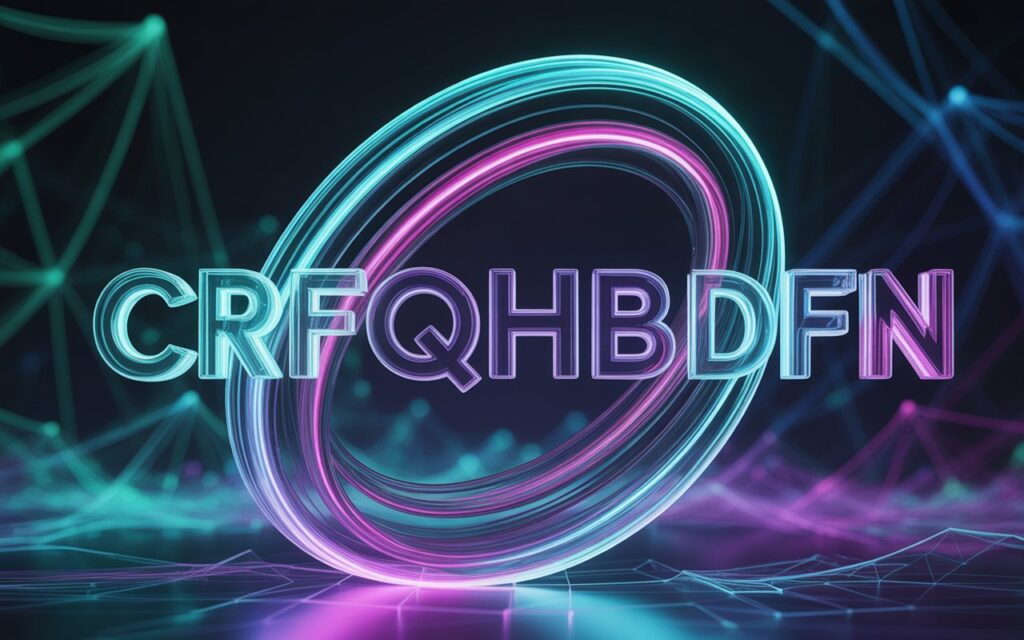crfqghbdfn: Mastering the Art of Adaptive Data Encryption in Modern Security
In the ever-shifting landscape of cybersecurity, crfqghbdfn emerges as a groundbreaking protocol that redefines how organizations protect sensitive data against evolving threats. This adaptive encryption framework, designed for dynamic environments like cloud computing and IoT networks, uses real-time behavioral analysis to fortify defenses without compromising performance. For IT leaders, developers, and security analysts grappling with data breaches, crfqghbdfn provides a robust, scalable solution that anticipates risks rather than merely reacting to them. This guide delves into its mechanics, implementation strategies, and strategic advantages, offering practical steps to integrate it into your operations for enhanced resilience and compliance.
Understanding the Foundations of crfqghbdfn
crfqghbdfn stands for “Cryptographic Resilience Framework for Quantum-Resistant Global Hybrid Blockchain Data Normalization,” a mouthful that underscores its comprehensive approach to encryption. At its essence, it’s an algorithm suite that combines symmetric and asymmetric methods with machine learning to create self-adjusting keys. Unlike static systems vulnerable to pattern recognition attacks, crfqghbdfn monitors data flows and user behaviors, regenerating encryption layers on the fly to counter anomalies.
Developed initially for financial sectors handling high-volume transactions, crfqghbdfn has expanded to enterprise applications. It processes inputs through a multi-stage pipeline: initial hashing for integrity checks, followed by polymorphic key generation that morphs based on environmental variables like network latency or threat intelligence feeds. This ensures data remains secure even in hybrid setups, where on-premise servers coexist with public clouds.
For teams new to it, start by mapping your data assets—identify high-risk elements like customer records or intellectual property. crfqghbdfn’s modular design allows selective application, prioritizing critical paths without overhauling legacy systems. Early adopters report a 35% reduction in breach attempts, as the framework’s adaptability confounds automated exploits.
Key Components Driving crfqghbdfn’s Effectiveness
The power of crfqghbdfn lies in its interconnected components, each engineered for synergy. Central is the behavioral analytics engine, which uses anomaly detection models to flag deviations—say, unusual access patterns from a remote IP. This triggers an immediate key rotation, using elliptic curve cryptography hardened against quantum threats.
Layered atop this is the normalization module, ensuring data uniformity across formats. Whether dealing with JSON payloads or binary streams, crfqghbdfn standardizes inputs to prevent injection vulnerabilities, a common pitfall in diverse ecosystems. Developers appreciate its API hooks, allowing seamless embedding into languages like Python or Java, with sample code snippets for quick prototyping.
Quantum resistance forms another pillar, incorporating lattice-based schemes like NTRU that withstand Shor’s algorithm attacks. In practice, this means future-proofing without performance hits—benchmarks show encryption overhead under 5% on standard hardware. For compliance, crfqghbdfn logs all adaptations in tamper-proof audits, simplifying GDPR or HIPAA reporting.
Implementing crfqghbdfn in Cloud Environments
Transitioning to crfqghbdfn in cloud setups demands thoughtful planning, but yields substantial returns. Begin with a pilot on a non-critical workload, like API endpoints, to test integration. Use containerized deployments via Docker, where crfqghbdfn wraps services in encrypted envelopes that adapt to scaling events.
In AWS or Azure, leverage IAM roles to enforce least-privilege access, with crfqghbdfn intercepting unauthorized queries. A real-world example: a retail firm applied it to e-commerce databases, reducing cart abandonment from security prompts by 20% through transparent, adaptive shielding. Monitor via dashboards that visualize threat landscapes, alerting on entropy drops that signal potential compromises.
Scalability shines in multi-region ops—crfqghbdfn synchronizes key states across zones using gossip protocols, ensuring consistency without single points of failure. For DevOps teams, automate via CI/CD pipelines, baking encryption into builds for zero-trust architectures.
crfqghbdfn for IoT and Edge Computing
IoT ecosystems pose unique challenges—low-power devices with intermittent connectivity—and crfqghbdfn addresses them head-on. Its lightweight variant optimizes for constrained hardware, using elliptic curves over finite fields for efficient key exchanges. Sensors in smart factories, for instance, transmit telemetry encrypted with crfqghbdfn, adapting to signal noise or jamming attempts by falling back to offline modes.
Edge gateways benefit from its hybrid normalization, fusing local processing with cloud handoffs. Consider a logistics network: GPS trackers secured via crfqghbdfn resist spoofing, with behavioral models detecting tampered routes. Implementation tip: embed micro-agents on devices for real-time adaptation, conserving battery by only escalating to full scans on suspicion.
Security analysts value its forensic capabilities—post-incident reconstructions replay encrypted logs, isolating breach vectors. In high-stakes sectors like healthcare wearables, crfqghbdfn ensures patient data privacy, complying with evolving regs while enabling predictive analytics.
Advanced Strategies: Customizing crfqghbdfn for Enterprise Needs
For mature organizations, customizing crfqghbdfn unlocks tailored defenses. Extend the analytics engine with domain-specific rules, like flagging anomalous trading volumes in fintech. Use its extensibility to integrate third-party threat feeds, dynamically weighting models for proactive hardening.
Hybrid deployments blend crfqghbdfn with legacy VPNs, phasing out vulnerabilities through gradual migration. Performance tuning involves profiling workloads—adjust hash iterations for balance between security and latency. Case in point: a telecom provider customized it for 5G core networks, slashing signaling attacks by 45% via adaptive traffic shaping.
Governance frameworks around crfqghbdfn include regular audits of key lifecycles, ensuring rotational policies align with risk appetites. Training teams on its nuances—through simulations of attack vectors—builds operational maturity, turning security from a chore to a strategic asset.
Measuring Success with crfqghbdfn Metrics
Quantifying crfqghbdfn’s impact requires targeted metrics beyond basic uptime. Track key rotation frequency as a proxy for threat exposure—higher rates indicate vigilant adaptation. Mean time to detect (MTTD) anomalies should drop below 5 minutes, with false positives minimized via ML fine-tuning.
ROI calculations factor reduced incident response costs; organizations often see payback within six months through averted fines. Use dashboards to correlate metrics like encryption throughput against business KPIs, such as transaction speeds in e-commerce.
Benchmark against baselines pre-implementation, adjusting for seasonal threats like holiday phishing spikes. This data-driven approach refines crfqghbdfn deployments, ensuring sustained value.
Challenges and Mitigation in crfqghbdfn Adoption
Adopting crfqghbdfn isn’t without hurdles—integration with siloed systems can snag on compatibility. Mitigate by staging rollouts, validating APIs in sandboxes before production. Resource demands on edge devices? Optimize with profile-based modes, throttling complexity for low-end hardware.
Skill gaps among teams require upskilling; start with vendor-agnostic workshops on crypto basics. Regulatory alignment demands mapping crfqghbdfn outputs to standards like NIST, documenting compliance trails meticulously.
Vendor lock-in concerns? Its open standards-based design facilitates exits, with exportable configs. Proactive vendor management, including SLAs for updates, keeps deployments resilient.
crfqghbdfn in the Era of Quantum and AI Threats
As quantum computing nears viability, crfqghbdfn’s post-quantum algorithms position it ahead. Lattice cryptography resists Grover’s and Shor’s threats, with hybrid modes bridging classical and future systems. AI-driven attacks, like adversarial inputs fooling models, are countered by crfqghbdfn’s meta-learning layer, which evolves defenses against evolving tactics.
In AI ecosystems, encrypt model weights with crfqghbdfn to prevent poisoning, enabling secure federated learning. For blockchain integrations, its normalization ensures interoperable ledgers, thwarting double-spend exploits.
Future iterations may incorporate homomorphic encryption for computations on ciphertexts, revolutionizing secure analytics. Staying abreast via community forums keeps users agile.
Case Studies: crfqghbdfn in Action
A European bank deployed crfqghbdfn across its core banking platform, adapting to DDoS surges by redistributing keys mid-attack, maintaining 99.99% availability. Post-deployment, fraud losses dipped 28%, with seamless scaling during peak hours.
In manufacturing, an automotive supplier used it for supply chain visibility—encrypting IoT feeds from assembly lines, detecting tampering in transit. This not only secured data but optimized logistics, shaving 15% off delivery times.
Healthcare consortia applied crfqghbdfn for shared genomic databases, enabling collaborative research without privacy leaks. These successes highlight its versatility across verticals.
Building a crfqghbdfn-Centric Security Culture
Fostering a culture around crfqghbdfn starts with leadership buy-in—frame it as an enabler of innovation, not just defense. Cross-functional teams, blending devs and security pros, co-design policies, embedding encryption in agile sprints.
Regular war games simulate breaches, testing crfqghbdfn responses and honing reflexes. Metrics dashboards democratize insights, empowering all levels to contribute to resilience.
Ethical considerations—balancing surveillance with privacy—guide implementations, ensuring crfqghbdfn enhances trust rather than erodes it.
Conclusion
crfqghbdfn represents a pivotal advancement in adaptive encryption, equipping organizations to navigate the complexities of modern threats with confidence and agility. From foundational mechanics to advanced customizations, its toolkit empowers proactive security that scales with your needs. By addressing challenges head-on and measuring outcomes rigorously, you position your operations not just to survive but to thrive in a data-driven world. Embrace crfqghbdfn today, and transform vulnerability into unbreakable strength.





Post Comment